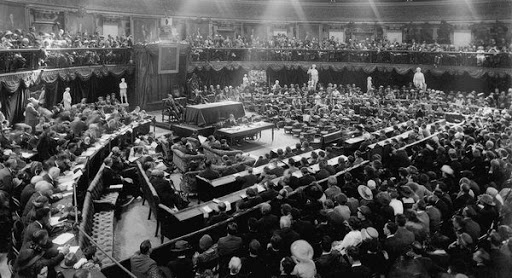Retreat from Revolution: the Dáil Courts 1920 to 1924
by Mary Kotsonouris (Irish Academic Press, €18.95)
This book shows that Ireland did really undergo a revolution between 1919 and 1923.
The old legal order was progressively undermined, delegitimised, and eventually overthrown. But it was not fully and formally replaced until the enactment of the Courts of Justice Act, under the Free State Constitution, in April 1924.
For almost five years, the legitimacy of the courts and law enforcement was contested, as one civil war was by followed another.
The first, started in 1919 with attacks on Irish born RIC members and Resident Magistrates, was a military struggle, but it was also a struggle for legitimacy. This war ended with the Truce of July 1921, and the Treaty of December 1921.
Arms
The second commenced, after failed attempts at conciliation between pro and anti-Treaty forces, on 28 June 1922, with the shelling of the Four Courts. It ended with the dumping of arms by the defeated anti-Treaty forces on May 24, 1923.
The existing legal order, established under the Crown, had worked, more or less effectively, up to 1919.
But it ceased to function for normal civil cases as early by the end of that 1919. Attacks on Crown-appointed magistrates, and on the RIC, meant that the Crown system could no longer make and enforce decisions in civil matters. Without an accepted police service to enforce its decisions, no courts system can work.
The RIC came under such attack that it had to devote all its efforts to its own security and had neither the time, nor the public acceptance, needed to do normal police work effectively.
But civil war or no civil war, disputes continued to arise about property rights, non-payment of debts, wills and many more minor matters. Some system had to be found to enable such disputes to be resolved. Otherwise people would take the law into their own hands. For example, many areas of Clare were subjected to martial law because of cattle being driven off land and a general defiance of law during 1919.
These Dáil Courts decided thousands of cases although they were in constant threat of being closed”
The Dáil Courts, whose story is told here by Justice Mary Kotsonouris, filled this vacuum for much of the period between 1920 and 1923.
The first step was taken by the Dáil, itself technically an illegal body at the time, when it appointed a judge to arbitrate on disputes over land ownership in Mayo in August 1919.
In June 1920, it initiated a hierarchy of parish and county courts, with a Supreme Court to hear appeals. While the senior positions in this hierarchy were filled by lawyers, at parish level the Dáil Courts were often made up of local clergy and other citizens of good standing who had no legal training.
These Dáil Courts decided thousands of cases although they were in constant threat of being closed down by the RIC or others who wanted to take the law into their own hands. Its decisions were enforced by the IRA Volunteers.
But then the Dáil and the IRA split over the Treaty in 1922.
The new Free State government wanted to establish a new court system, that respected the constitution of the Free State, and whose decisions would be enforced by the newly-created Garda Síochána and by no one else. Many of those involved in the Dáil courts did not accept the Free State Constitution based as it was on a treaty with Britain they rejected.
New state
The Dáil Courts had decided thousands of cases and these could not all be reopened. After much debate, a system of registering these decisions under the laws of the new state was devised.
This story is populated with many vivid characters, some now forgotten. Kotsonouris brings them and the time they lived through back to life, and some readers would indeed have relished more detail here.
She shows how order based on law was painfully re-established in this jurisdiction after a bitter conflict, and how the institutions we revere today came into being.
This is a story everyone should know.
John Bruton served as Taoiseach from 1994 to 1997.




